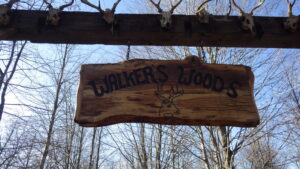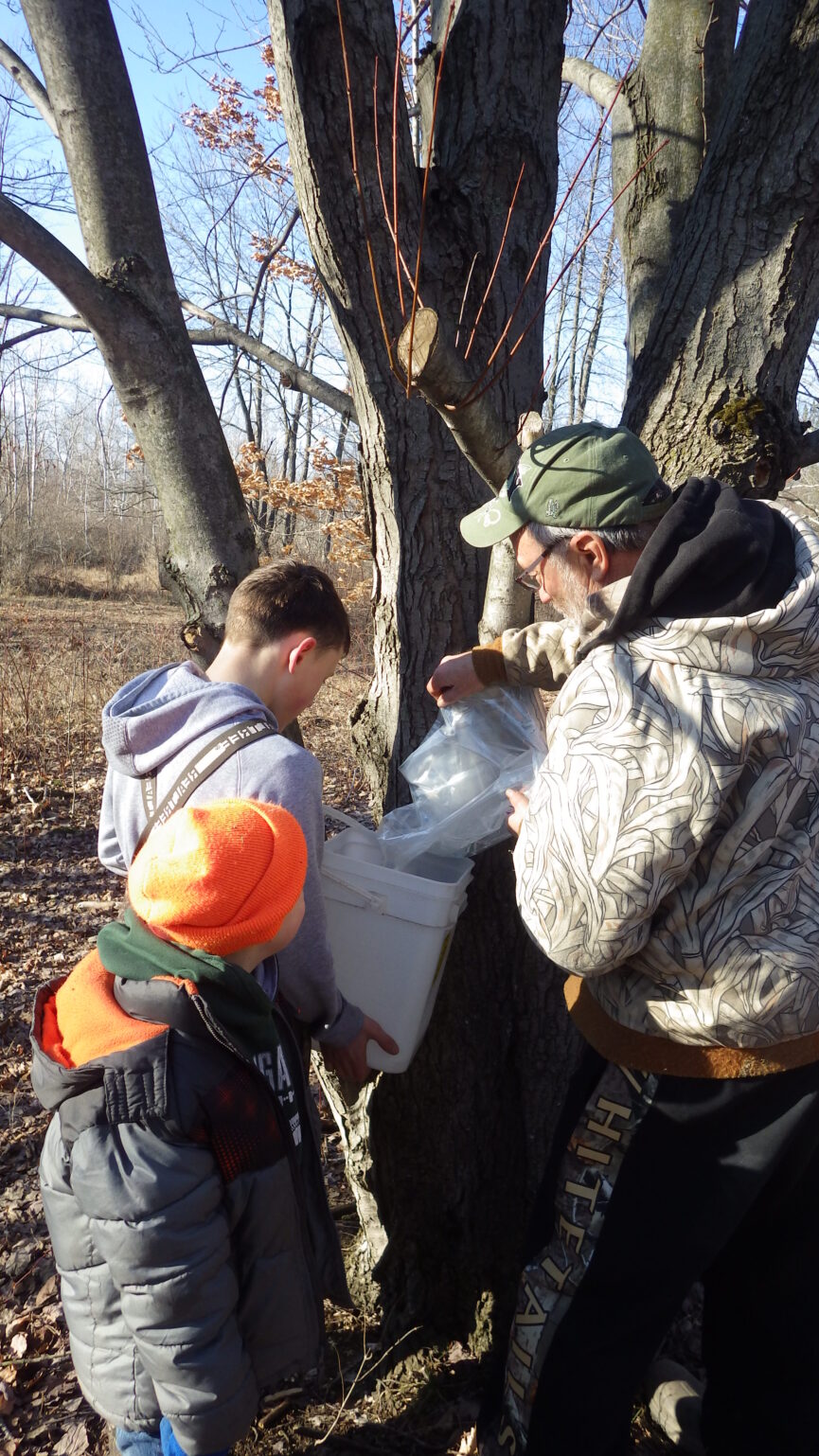
One of my fondest memories as a teenager was working for a neighbor in
his woods gathering sap to make maple syrup. This began first with “tapping”
maple trees using a hand-drill and hammering in metal spigots (aka taps) on
which we hung special metal buckets which had lids to keep out moisture and
debris. Some trees on the smaller side only required one tap, while bigger ones
could handle more. There was a lot of snow that particular winter, and we had to
do some serious wading during our first attempts to reach the trees, but
eventually we established some notable trails from our continual foot-travel
through the woods.
The trees, I would discover, had their individual character when it came to
producing sap, which reminded me of dairy cows producing milk. Some trees
were dependable sap producers, while others were on the moody side and only
so-so one day, then doing double duty the next, and the dependable trees let me
know it wasn’t just the weather. The weather, however, being variable as it can
be in Michigan at that time of year, did have a daily effect on all the trees, causing
sap buckets to only be partially full one day and then to the point of overflowing
the next.
Other kids were working with me in sap gathering, and we each had a pair
of five-gallon buckets to pour in the sap from each tree, and when they got to be
on the heavy side, we headed to a large tank on wheels being towed by a tractor
which was following a winding trail through the woods. This in turn was hauled to
the “sugar shack” where my neighbor was tending the fire while boiling the sap
down into maple syrup. It usually takes 40 gallons of sap to make one gallon of
syrup, so that represents a lot of painstaking boiling. The steam escaping from the
roof openings of the sugar shack had a distinct earthy scent which created a
unique and pleasant aroma wafting all about and announcing a sweet bounty
being created during the bubbling process.
Maple sap is typically about 98 percent water and 2 percent sugar, and
though it looks like water, it does possess an earthy and slightly sweet flavor. I
also discovered when I tripped over a tree root and spilled the contents of a
bucket all over me which soaked me to the skin, that it could be a bit sticky. I had
to literally peel my clothes off after I completed my day, and getting wet in that
environment was nothing new due to some regular perspiring while working in a
continually snow-thawing environment. However, folks, hard physical labor in a
woodland environment has a natural way of keeping you warm, trust me!
Gathering maple sap in this fashion has a lot to do with dealing with
thawing snow, and as mentioned before, freezing nights with daytime
temperatures in the 40’s is ideally required to start the sap flowing. Depending
upon the weather, this can be an on again and off again experience. Usually, early
March represents the typical starting timeframe, but recent winters in my neck of
the woods, anyway, has had everything happening by mid-February and even
earlier. It is clearly in the hands of Mother Nature, and a touchy part about all this
is to accomplish gathering the sap before maple trees begin their natural
transition of forming buds, because when this happens the sap becomes cloudy,
even bitter and not as plentiful as before.
 Bob Walker of Kingston has been really enjoying learning all the ins and
Bob Walker of Kingston has been really enjoying learning all the ins and
outs of syrup making in his family woods. On the first year of making maple syrup,
he boiled sap in the open air, but the following year he and his family constructed
a sugar-shack, where he and his wife Darlene and their two sons and their families
all pitch in. Making maple syrup has become a seasonal family affair which is
looked forward to and much enjoyed by all three generations.
The maple syrup they create together is strictly for their own use and
matters are kept on a small scale. They maintain 50 taps on about three dozen
trees which are near the sugar shack to keep sap gathering efforts to a minimum,
and these specific trees have proven to be dependable producers to meet their
needs. Their woods certainly contain a lot more maple trees which could also be
tapped, but the Walker family clan is quite happy to keep matters in a more
simple and laidback nature. It still requires a lot of hard work but is clearly a labor
of love on their part which involves family teamwork.
Sap is transported to the sugar shack with buckets and dumped into a large
barrel with a spigot at the bottom. Sap, when needed, is then transferred to the
boiling pans, of which there are two large steaming pans on top of a big iron
woodstove. One pan is for the actual boiling, while the other pan is for adding
fresh sap and heating it up before adding it to the actual boiling pan. As Bob
explained, only using one pan can become a more lengthy process because
adding fresh sap cools and slows matters, and the boiling process has to start all
over again.
The final process is transferring the boiled sap which has become the right
color and texture to a large pot on a single burner gas stove, where it is poured
into the pot through a strainer to remove any possible debris. Then the boiling
down is completed with a close eye kept on the temperature, with 219 degrees F
being key when using a thermometer. Bob also uses a spoon, that when the syrup
clings to it and drips off just right, it is completed, and care then must be taken
during this final process so as not to burn the syrup, which would ruin matters.
Hopefully, according to the whims of Mother Nature, it is to harvest
enough maple syrup to cover the needs of three families for a year. And there is
little doubt that nothing is sweeter than savoring maple syrup gathered and
processed by a family working together in their own woods.
- Fickle weather during December deer hunting adventures - December 3, 2025
- Michigan’s most popular opening day – November 15th - November 23, 2025
- A missing dog found while anticipating opening day - November 23, 2025

